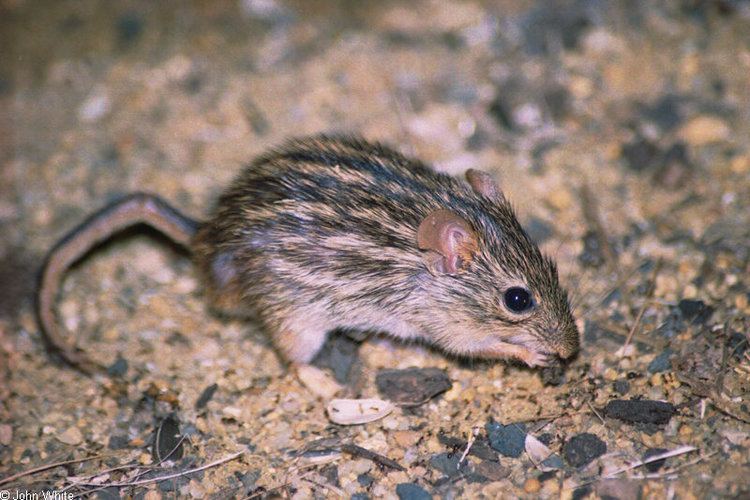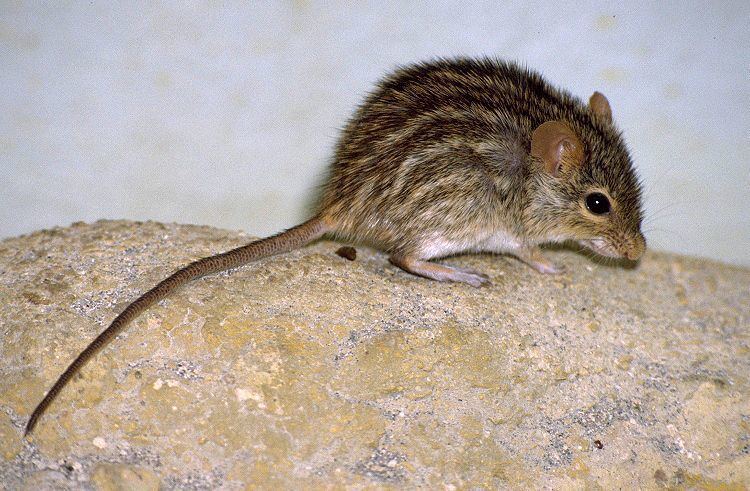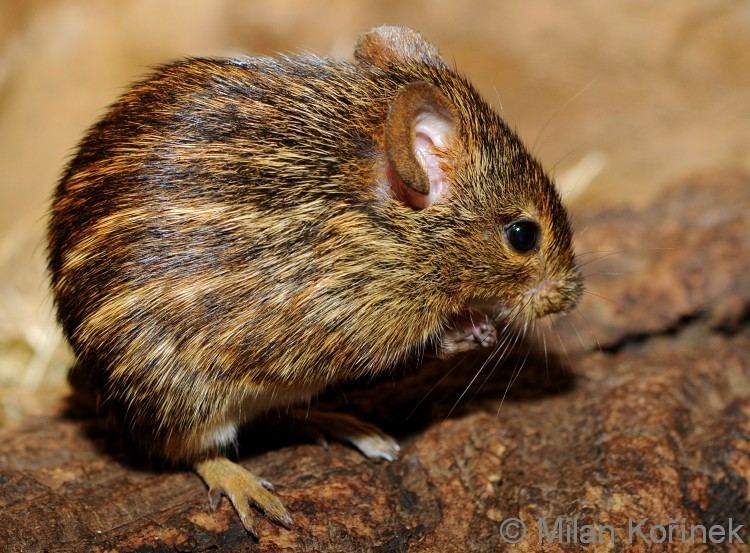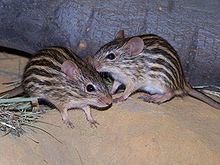Subfamily Murinae Phylum Chordata Rank Genus | Scientific name Lemniscomys Higher classification Murinae Order Rodent | |
 | ||
Lower classifications Barbary striped grass mo, Typical striped grass mo, Single‑striped grass mouse, Heuglin's striped grass mo, Griselda's striped grass mo | ||
Striped grass mouse lemniscomys barbarus
Lemniscomys, sometimes known as striped grass mice or zebra mice, is a genus of murine rodents from Africa. Most species are from Sub-Saharan Africa; L. barbarus is the only found north of the Sahara. They are generally found in grassy habitats, but where several species overlap in distribution there is a level of habitat differentiation between them.
Contents

They are 18.5–29 cm (7.3–11.4 in) long, of which about half is tail, and weigh 18–70 g (0.63–2.47 oz). The pelage pattern of the species fall into three main groups: The "true" zebra mice with distinct dark and pale stripes (L. barbarus, L. hoogstraali and L. zebra), the spotted grass mice with more spotty/interrupted stripes (L. bellieri, L. macculus, L. mittendorfi and L. striatus), and the single-striped grass mice with only a single dark stripe along the back (L. griselda, L. linulus, L. rosalia and L. roseveari).

They are generally considered diurnal, but at least some species can be active during the night. They feed on plants, but sometimes take insects. There are up to 12 young per litter, but 4–5 is more common. The average life expectancy is very short, in the wild often only a year, but a captive L. striatus lived for almost 5 years. A more typical captive life expectancy is 2–2½ years.

While most are common and not threatened, L. mittendorfi is restricted to Mount Oku and considered Vulnerable by the IUCN. L. hoogstraali and L. roseveari are both very poorly known, leading to their rating as Data Deficient. Some of the widespread species are regularly kept in captivity, especially L. barbarus, L. striatus and L. zebra.
Four striped grass mouse rhabdomys pumilio
Species
Lemniscomys currently includes 11 species. Until 1997, L. zebra was generally treated as a subspecies of L. barbarus. It is possible L. striatus and L. zebra, as presently defined, actually are species complexes.
